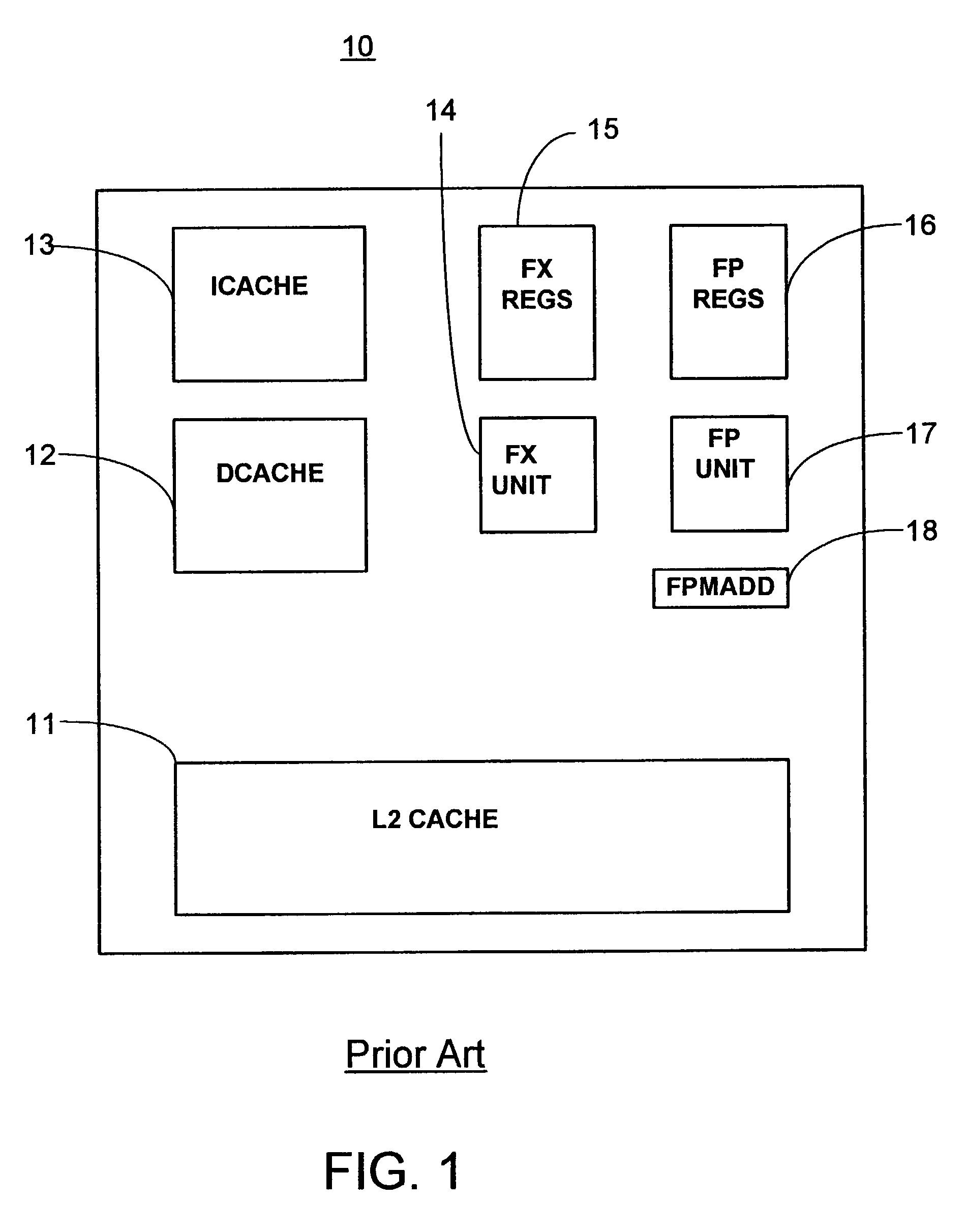Method and apparatus to eliminate processor core hot spots
a hot spot and processor technology, applied in the field of computer processor chips, can solve problems such as power density increase, power density problem, and unit siz
- Summary
- Abstract
- Description
- Claims
- Application Information
AI Technical Summary
Benefits of technology
Problems solved by technology
Method used
Image
Examples
Embodiment Construction
[0036]Having reference now to the figures, and in particular FIG. 1, a processor 10, is shown. Processor 10 can be any processor. Examples of processors include Power4 by the International Business Machines Corporation, or Itanium by the Intel Corporation. Some of the major functional units commonly found on such processors are shown.
[0037]L2 cache 11 is one memory in a memory hierarchy common in modern processors. L2 cache 11 is commonly in the range of one megabyte (1 MB) to 16 MB, but could be of any size. L2 cache is often optimized for bandwidth, rather than for speed or density.
[0038]Icache 13 and dcache 12 represent a common implementation of the “first level cache” L1 cache in the memory hierarchy. Dcache 12 holds data that is likely to be used in the processor; icache 13 holds instructions that are likely to be used in the processor. Typical sizes for icache 13 and dcache 12 are 32,000 bytes (32 KB) to 256 KB, although larger and smaller sizes are possible. Icache 13 and dc...
PUM
| Property | Measurement | Unit |
|---|---|---|
| temperature | aaaaa | aaaaa |
| power density | aaaaa | aaaaa |
| data affinity | aaaaa | aaaaa |
Abstract
Description
Claims
Application Information
 Login to View More
Login to View More - R&D
- Intellectual Property
- Life Sciences
- Materials
- Tech Scout
- Unparalleled Data Quality
- Higher Quality Content
- 60% Fewer Hallucinations
Browse by: Latest US Patents, China's latest patents, Technical Efficacy Thesaurus, Application Domain, Technology Topic, Popular Technical Reports.
© 2025 PatSnap. All rights reserved.Legal|Privacy policy|Modern Slavery Act Transparency Statement|Sitemap|About US| Contact US: help@patsnap.com



